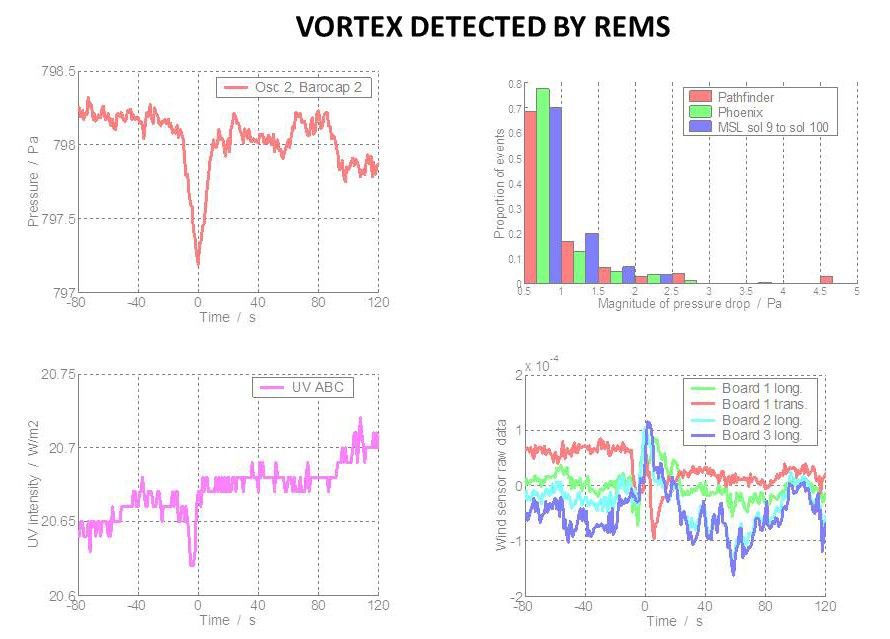Whirlwind Detection by Curiosity in Gale Crater
| Credit | NASA/JPL-Caltech/CAB(CSIC-INTA)/FMI/Ashima Research |
|---|---|
| Language |
|
The Rover Environmental Monitoring Station (REMS) on NASA's Curiosity Mars rover has detected dozens of whirlwinds, or vortex events, causing brief dips in atmospheric pressure, and sometimes other measurable effects.
The upper left graph of this set shows the pressure dip of one vortex detected by REMS. The time on the horizontal axis is marked as the number of seconds before or after the event. Pressure is indicated in pascals.
The lower left graph shows a corresponding dip in the amount of ultraviolet light measured by REMS, which could be caused by dust rushing by. This indicator has been rare among the vortices detected by REMS, and Curiosity's Gale Crater study area does not display the tracks of dust-lifting whirlwinds, which are common in other parts of Mars (for example at http://photojournal.jpl.nasa.gov/catalog/PIA09610). It may be that whirlwinds usually occur at Gale without lifting much dust.
The lower right chart shows a brief disruption in wind sensed by REMS in the seconds before and after a pressure-dip event.
The upper right chart provides comparisons of pressure dips measured by Curiosity (during the first 100 sols of its mission), by the Mars Pathfinder lander in 1997 and by the Phoenix Mars Lander in 2008. Although the three missions landed in different regions of Mars, they observed pressure dips of similar magnitude.

























